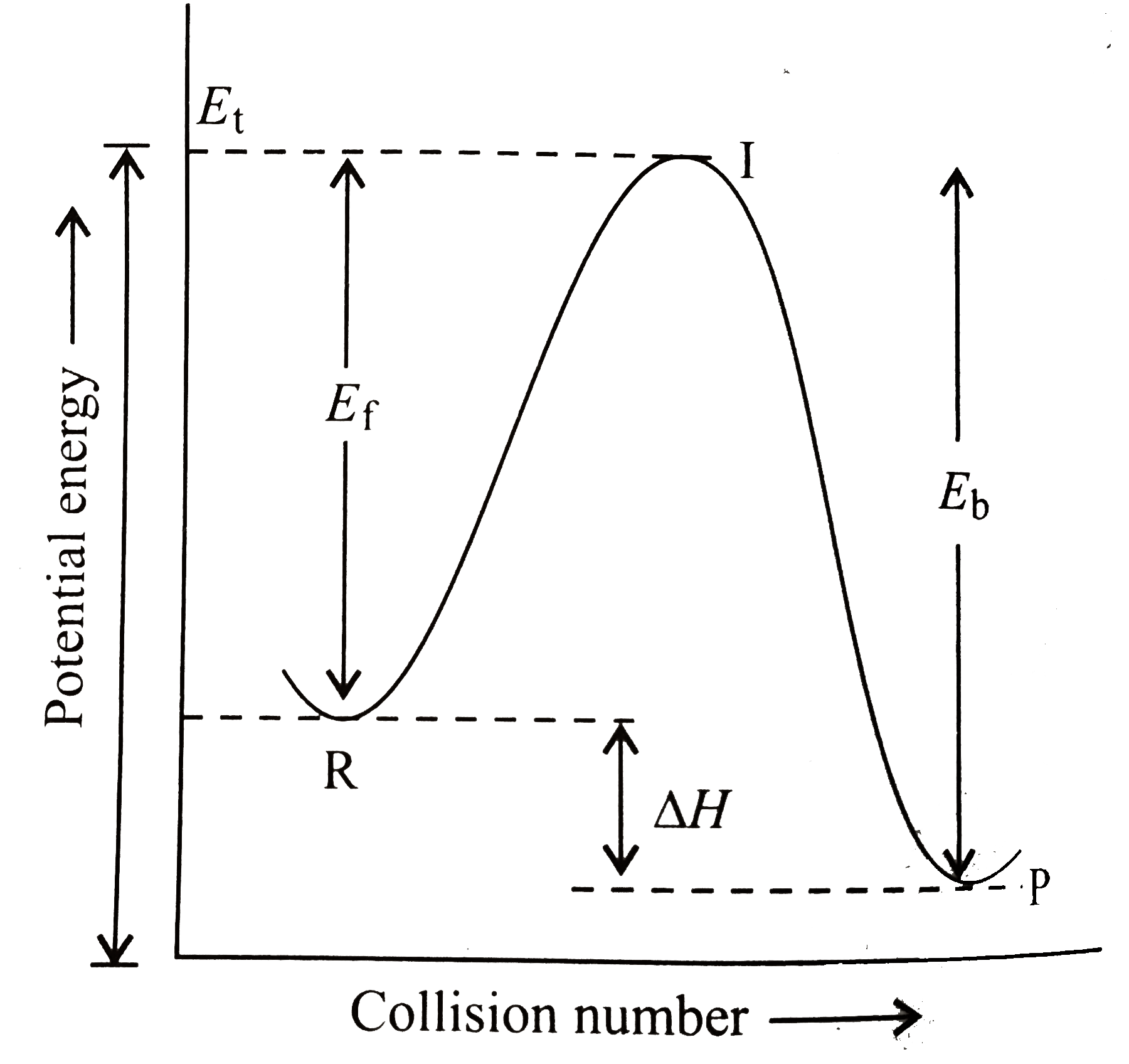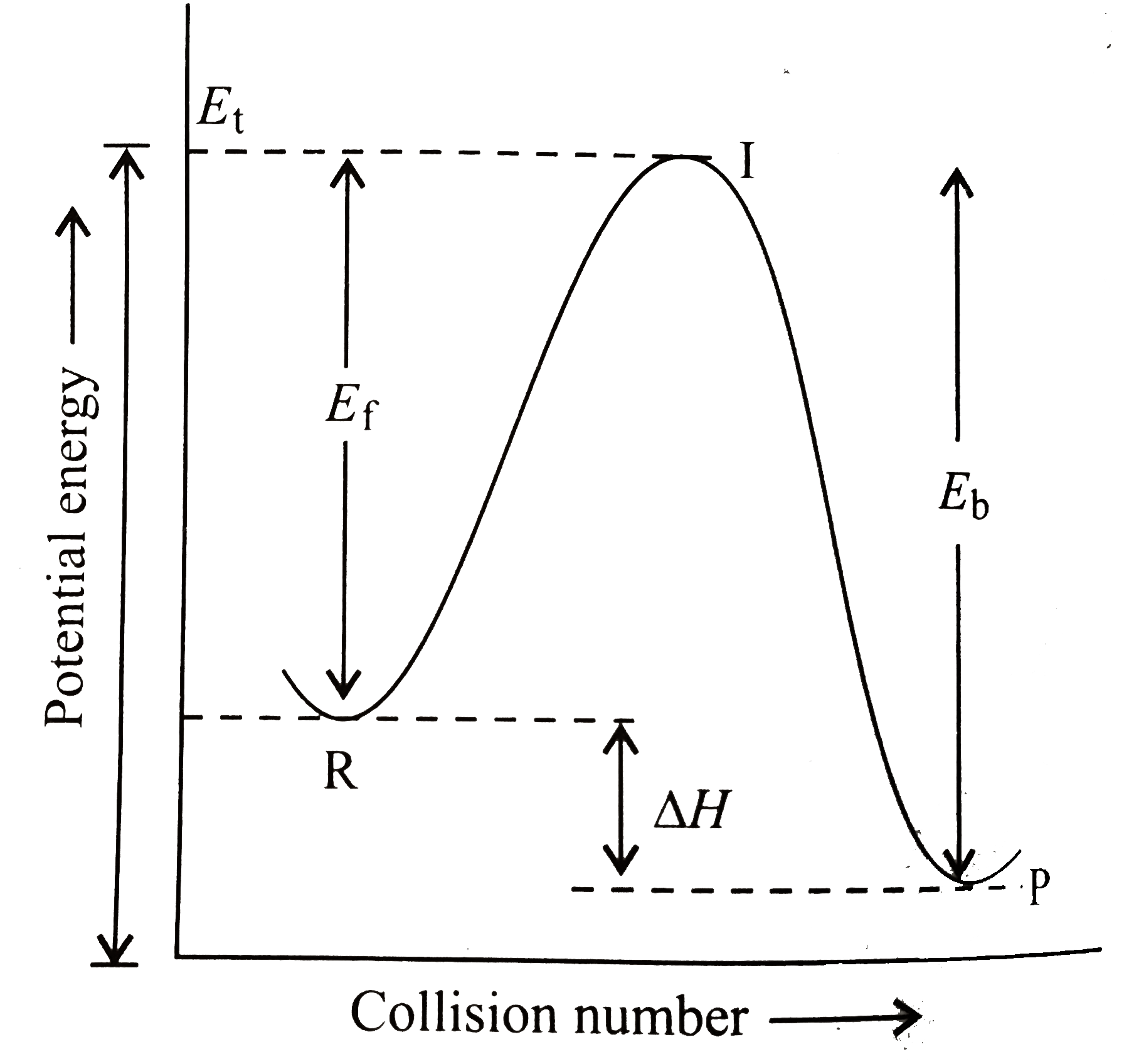The activation energies of the forward and backward reactions in the case of a chemical reaction are 30.5 and 45.4kJ/mol respectively. The reaction is:
To determine whether the given reaction is exothermic or endothermic based on the activation energies of the forward and backward reactions, we can follow these steps:
1. Identify the Given Values:
- Activation energy of the forward reaction (Ea, forward) = 30.5 kJ/mol
- Activation energy of the backward reaction (Ea, backward) = 45.4 kJ/mol
2. Use the Formula for Change in Enthalpy (ΔH):
- The change in enthalpy (ΔH) can be calculated using the formula:
ΔH=Ea (forward)−Ea (backward)
3. Substitute the Given Values into the Formula:
- Substitute the activation energies into the formula:
ΔH=30.5kJ/mol−45.4kJ/mol
4. Perform the Calculation:
- Calculate ΔH:
ΔH=30.5−45.4=−14.9kJ/mol
5. Interpret the Result:
- Since ΔH is negative (-14.9 kJ/mol), this indicates that the reaction releases energy.
- A negative ΔH signifies that the reaction is exothermic.
Final Conclusion:
The reaction is exothermic.
---
- Activation energy of the forward reaction (Ea, forward) = 30.5 kJ/mol
- Activation energy of the backward reaction (Ea, backward) = 45.4 kJ/mol
- The change in enthalpy (ΔH) can be calculated using the formula:
ΔH=Ea (forward)−Ea (backward)
- Substitute the activation energies into the formula:
ΔH=30.5kJ/mol−45.4kJ/mol
- Calculate ΔH:
ΔH=30.5−45.4=−14.9kJ/mol
- Since ΔH is negative (-14.9 kJ/mol), this indicates that the reaction releases energy.
- A negative ΔH signifies that the reaction is exothermic.
The reaction is exothermic.
Topper's Solved these Questions
- ALDEHYDES, KETONES AND CARBOXYLIC ACIDS BOOK - AAKASH INSTITUTE ENGLISHCHAPTER - ALDEHYDES, KETONES AND CARBOXYLIC ACIDS EXERCISE - Assignment (SECTION -J Akash challengers Questions)
10 Videos
- ALCOHOLS, PHENOLS AND ETHERS BOOK - AAKASH INSTITUTE ENGLISHCHAPTER - ALCOHOLS, PHENOLS AND ETHERS EXERCISE - Try Yourself
5 Videos
- AMINES BOOK - AAKASH INSTITUTE ENGLISHCHAPTER - AMINES EXERCISE - Assignment Section -J (Aakash Challengers Questions)
9 Videos
Similar Questions
The activation energies of the forward and backward reactions in the case of a chemical reaction are 37.5 and 51.3 kJ/mole respectively The reaction is
View SolutionA colliison between reactant molecules must occur with a certain minimum energy before it is effective in yielding Product molecules. This minimum energy is called activation energy Ea Large the value of activation energy, smaller the value of rate constant k. Larger is the value of activation energy, greater is the effect of temperature rise on rate constant k.

Ef= Activation energy of forward reaction
Eb= Activation energy of backward reaction
ΔH=Ef−Eb
Ef= threshold energy
The activation eneries for forward and backward reactions in a chemical reaction are 30.5 and 45.4kJmol−1 respectively. The reaction is
View Solution
Knowledge Check
The Activation energy for a chemical reaction mainly depends upon
Athe difference in energies of reactants and productsBthe sum of energies of reactants and productsCthe difference in energy of intermediate complex with the average energy of reactantsand productsDthe difference in energy of intermediate complex and the average energy of reactants.In a hypothetical reaction X→Y, the activation energy for the forward backward reactions are 15 and 9 kJ mol−1 respectively. The potential energy of X is 10 kJ mol−1. Which of the following statement is/are correct?
(i) The threshold energy of the reaction is 25 kJ mol−1
(ii) The potential energy of Y is 16 kJ mol−1
(iii) Heat of reaction is 6 kJ mol−1
The reaction is endothermic.AOnly (i)BOnly (i) and (ii)COnly (ii) and (iii)DAll are correct
When the activation energies of the forward and backward reactions are equal, then :
View SolutionIf the activation energies of the forward and backward reactions of a reversible reaction are Ea(f) and Ea(b), respectively. The ΔE of the reaction is ………..
View SolutionA colliison between reactant molecules must occur with a certain minimum energy before it is effective in yielding Product molecules. This minimum energy is called activation energy Ea Large the value of activation energy, smaller the value of rate constant k. Larger is the value of activation energy, greater is the effect of temperature rise on rate constant k.

Ef= Activation energy of forward reaction
Eb= Activation energy of backward reaction
ΔH=Ef−Eb
Ef= threshold energy
In a hypothetical reaction A→B, the activation energies for the forward and backward reactions are 15 and 9kJmol−1, respectively. The potential energy of A is 10kJmol−1. Which of the following is wrong?
View SolutionEnergy of activation of forward and backward reaction are equal in case (numerical calues) where
View SolutionThe activation energies for forward and backward reactions are EfandEb respectively. If the reaction is exothermic then which is true regarding relation of activation energies?
View SolutionIf Ef and Er are the activation energies of forward and backward reactions and the reaction is known to be exothermic, then
View Solution
